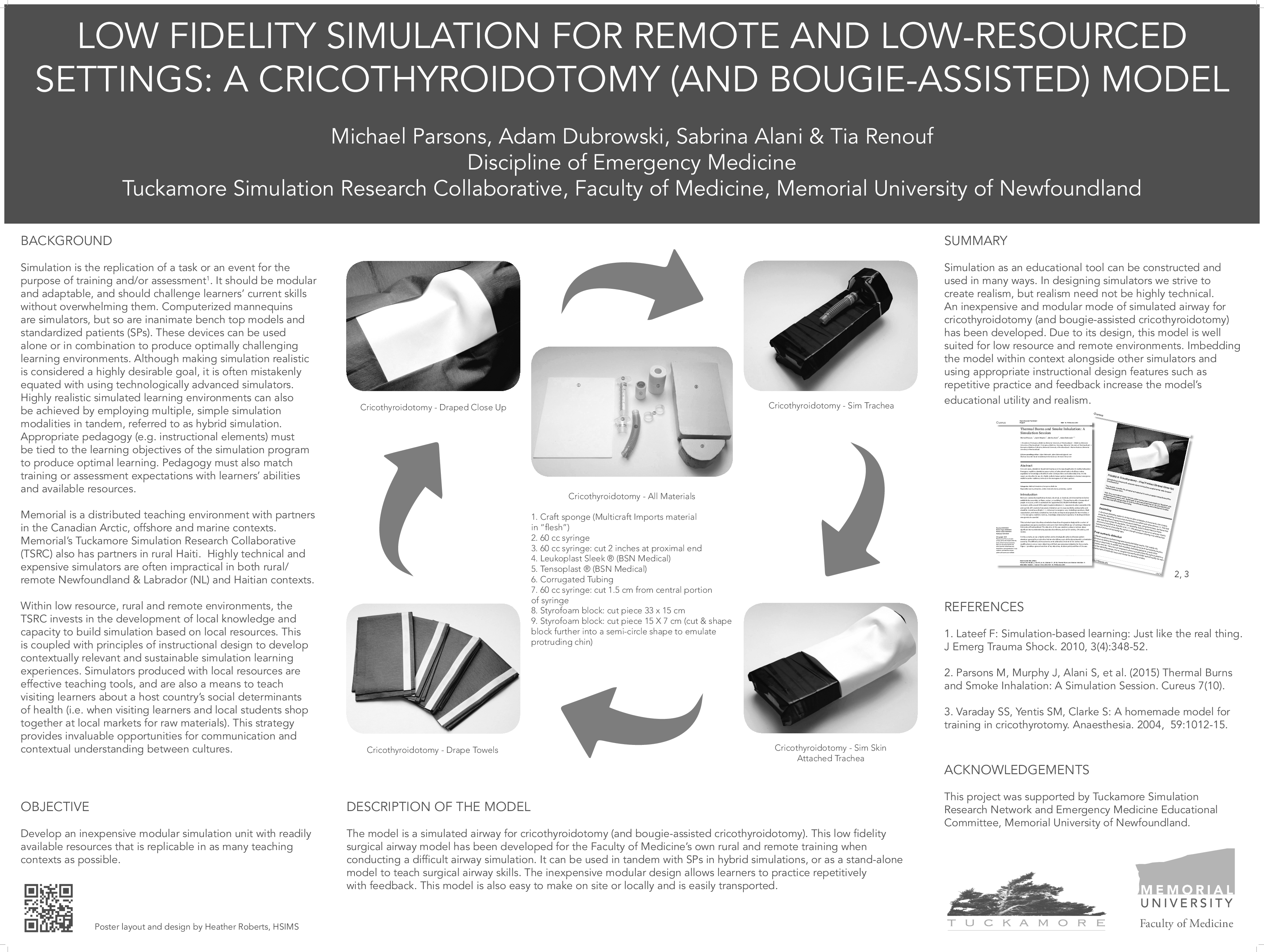Abstract
Presented at MESC, December 2015, St. John's, NL
Background: Simulation is the replication of a task or an event for the purpose of training and/or assessment. It should be modular and adaptable, and should challenge learners’ current skills without overwhelming them. Computerized mannequins are simulators, but so are inanimate bench top models and standardized patients (SPs). These devices can be used alone or in combination to produce optimally challenging learning environments. Appropriate pedagogy must be tied to learning objectives to produce the best learning. Pedagogy must also match training or assessment expectations with learners’ abilities and available resources. Memorial is a distributed teaching environment with partners in the Canadian Arctic, offshore and marine contexts. Memorial’s Tuckamore Simulation Research Collaborative (TSRC) also has partners in rural Haiti. Highly technical and expensive simulators are often impractical in both rural/remote NL and Haitian contexts. However, simulators produced with local resources are effective teaching tools. They are also a means to teach visiting learners about a host country’s social determinants of health when visiting learners and local students shop together at local markets for raw materials. This strategy provides invaluable opportunities for communication and contextual understanding between cultures.
Description of The Model: We developed a bougie-assisted crichothyroidotomy model for rural and remote training. Our objectives were to make an inexpensive modular unit with readily available resources, to be replicable in as many teaching contexts as possible. It can be used in tandem with SPs in hybrid simulations, or as a stand-alone model to teach surgical airway skills. The inexpensive modular design allows learners to practice repetitively with feedback. This model is easy to make locally or on site, and it travels well. In summary, simulation as an educational tool can be constructed and used in many ways. In designing simulators we strive to create realism, but realism need not be highly technical. We present an inexpensive simulated surgical airway model. It is well suited for low resource and remote environments. It can be combined with other types of simulators to achieve greater realism.





